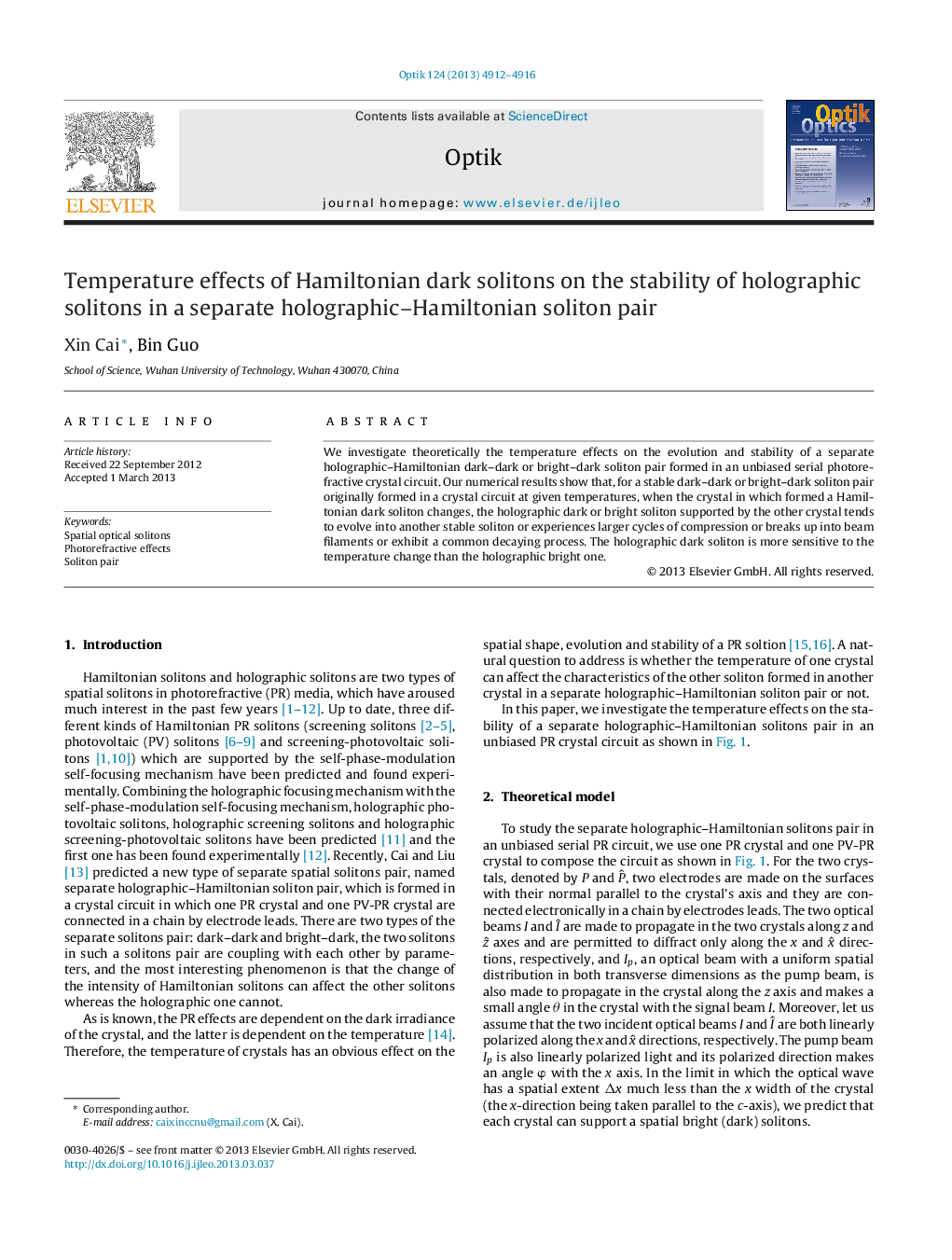| Article ID | Journal | Published Year | Pages | File Type |
|---|---|---|---|---|
| 850596 | Optik - International Journal for Light and Electron Optics | 2013 | 5 Pages |
We investigate theoretically the temperature effects on the evolution and stability of a separate holographic–Hamiltonian dark–dark or bright–dark soliton pair formed in an unbiased serial photorefractive crystal circuit. Our numerical results show that, for a stable dark–dark or bright–dark soliton pair originally formed in a crystal circuit at given temperatures, when the crystal in which formed a Hamiltonian dark soliton changes, the holographic dark or bright soliton supported by the other crystal tends to evolve into another stable soliton or experiences larger cycles of compression or breaks up into beam filaments or exhibit a common decaying process. The holographic dark soliton is more sensitive to the temperature change than the holographic bright one.
